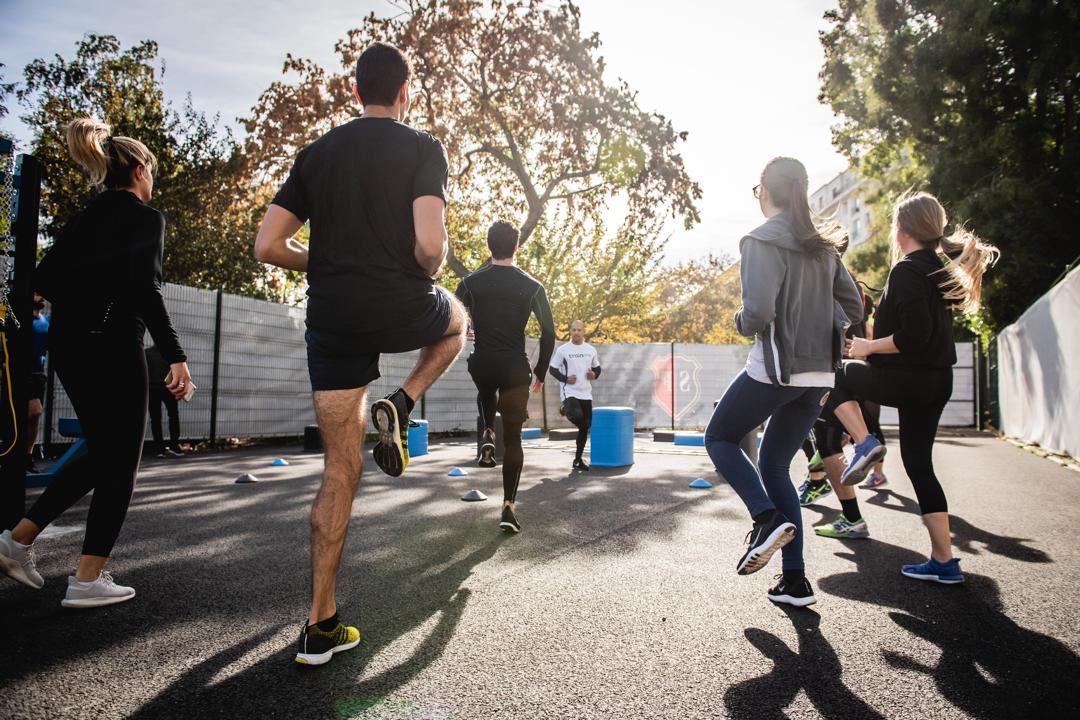Move it to Lose it - The Role of Exercise in Managing Joint Pain
Joint pain is a common condition that affects millions of middle-aged individuals. It can be caused by various factors, such as arthritis, injury, or overuse. Regardless of the cause, joint pain can have a significant impact on daily life and overall well-being.
Living with joint pain can make even simple tasks challenging. It can limit mobility, affect sleep quality, and hinder overall physical and mental health. Many individuals with joint pain experience decreased flexibility and strength, leading to a sedentary lifestyle and further exacerbating their condition.
The Benefits of Exercise for Joint Pain
Regular exercise has been shown to be highly beneficial in managing joint pain. It can help alleviate pain, improve joint flexibility, and enhance overall joint health. Exercise also plays a crucial role in reducing inflammation, which is often a contributing factor to joint pain.
Alleviating Joint Pain
Exercise helps alleviate joint pain by increasing blood flow to the affected area, which promotes healing and reduces inflammation. It also strengthens the muscles surrounding the joints, providing better support and stability. Additionally, exercise stimulates the release of endorphins, which are natural painkillers that can help reduce discomfort.
Improving Joint Flexibility, Strength, and Mobility
Engaging in regular exercise can improve joint flexibility, strength, and mobility. Stretching exercises, such as yoga or Pilates, can help increase joint flexibility and range of motion. Strength training exercises, such as weightlifting or resistance band workouts, can enhance the strength of the muscles surrounding the joints, providing better support and stability. Cardiovascular activities, such as walking, swimming, or cycling, can improve overall fitness and endurance, making daily activities easier to perform.
Reducing Inflammation and Promoting Joint Health
Exercise has been shown to have anti-inflammatory effects, which can help reduce joint pain. It can also promote joint health by increasing the production of synovial fluid, which lubricates the joints and reduces friction. Additionally, exercise can strengthen the bones, reducing the risk of osteoporosis and fractures.
Choosing the Right Exercise Routine
When starting an exercise program to manage joint pain, it is essential to consult a healthcare professional. They can provide personalized recommendations based on your specific condition and needs. Here are some examples of low-impact exercises that are generally suitable for individuals with joint pain:
- Walking: Walking is a low-impact exercise that can be easily incorporated into daily routines. Start with short distances and gradually increase the duration and intensity.
- Swimming: Swimming is a great option for individuals with joint pain as it provides resistance without putting stress on the joints. It is a full-body workout that can improve cardiovascular fitness and overall muscle strength.
- Cycling: Cycling is a low-impact exercise that can be done outdoors or on a stationary bike. It is gentle on the joints and can help improve lower body strength and cardiovascular fitness.
In addition to these low-impact exercises, it is essential to incorporate strength training exercises to improve muscle strength and stability. Flexibility exercises, such as stretching or yoga, can enhance joint flexibility and range of motion. It is also important to include cardiovascular activities to improve overall fitness and endurance.
Tips for Exercising Safely with Joint Pain
When exercising with joint pain, it is crucial to prioritize safety and minimize the risk of further injury. Here are some tips to help you exercise safely:
- Warm up and cool down: Before and after exercise, take the time to warm up and cool down properly. This can include gentle stretching exercises or light cardio to prepare the body for activity and prevent muscle soreness.
- Modify exercises: If certain exercises exacerbate your joint pain, modify them to reduce joint stress. For example, if squats are painful, try using a stability ball against a wall for support.
- Use proper form and technique: Using proper form and technique during exercises is essential to prevent injuries and maximize the benefits. If you are unsure about the correct form, consider working with a qualified fitness professional.
Overcoming Barriers and Staying Motivated
Starting an exercise routine can be challenging, especially when dealing with joint pain. Here are some strategies to help you overcome common barriers and stay motivated:
- Start slow and gradually increase intensity: It is important to start slow and gradually increase the intensity and duration of your workouts. This allows your body to adapt and reduces the risk of overexertion or injury.
- Find activities you enjoy: Choose activities that you enjoy and look forward to. This will make it easier to stick to your exercise routine and stay motivated.
- Set realistic goals: Set realistic and achievable goals for yourself. Celebrate small victories along the way, and track your progress to stay motivated.
Other Considerations for Managing Joint Pain
While exercise is an essential component of managing joint pain, there are other considerations to keep in mind:
- Physical therapy: Physical therapy can be beneficial for individuals with joint pain. A qualified physical therapist can provide targeted exercises and techniques to help alleviate pain and improve joint function.
- Medication: In some cases, medication may be prescribed to manage joint pain. It is important to follow your healthcare professional’s recommendations and discuss any concerns or side effects.
- Healthy diet and weight management: Maintaining a healthy diet and managing weight can help reduce joint stress. A diet rich in fruits, vegetables, lean proteins, and whole grains can provide essential nutrients for joint health.
Final Thoughts
In conclusion, exercise plays a crucial role in managing joint pain for middle-aged individuals with moderate joint pain. It can alleviate pain, improve joint flexibility and strength, reduce inflammation, and promote overall joint health. By choosing the right exercise routine, exercising safely, and staying motivated, individuals can take control of their joint pain and improve their quality of life.
